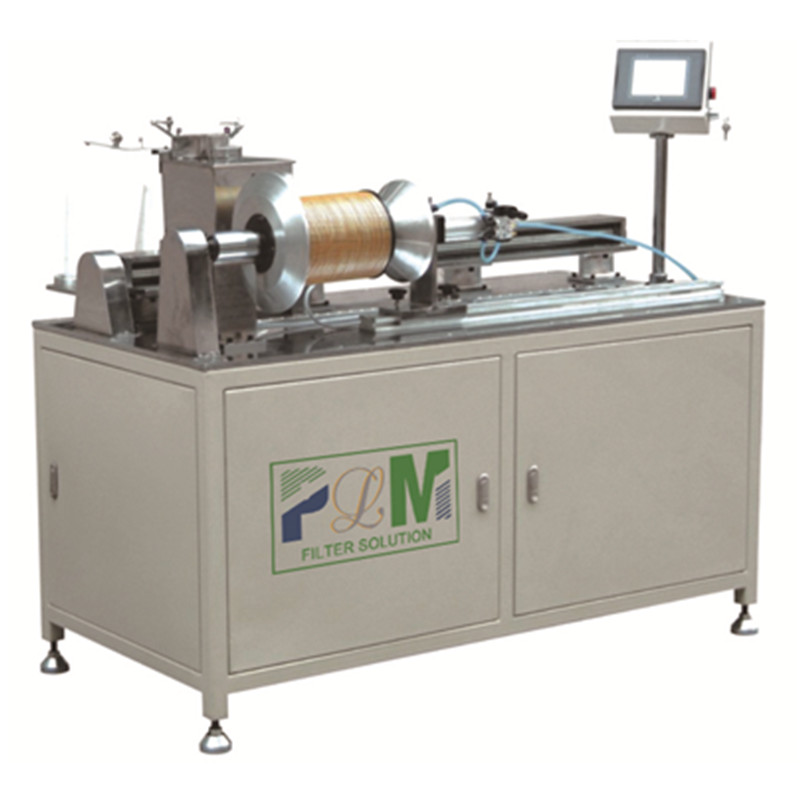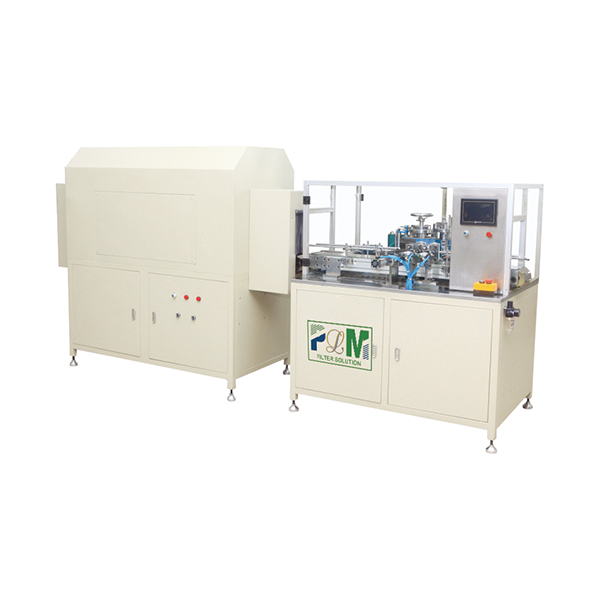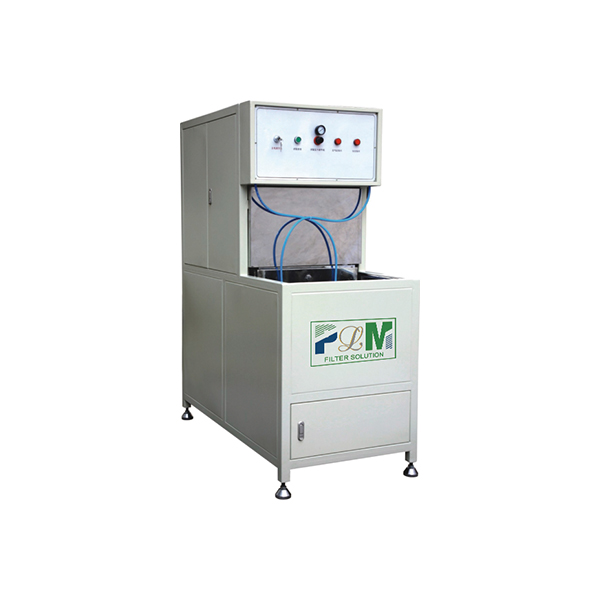Oct . 12, 2025 10:35 Back to list
Active Carbon Air Filter for Air Purifier - Odor Removal
The Quiet Workhorse Behind Cleaner Rooms: Active Carbon Filters and the Machines That Build Them
If you’ve ever wondered what’s actually doing the heavy lifting on odors and VOCs in modern purifiers, it’s the humble active carbon air filter for air purifier. And yes, the manufacturing gear matters just as much as the carbon recipe. I’ve spent more time than I’d admit walking factory floors; the difference between a crisp, uniform hot-melt bead and a messy one shows up later as flow resistance, carbon shedding, and—ultimately—customer complaints.

Industry trend check (short version)
Demand for multi-stage purifiers is climbing, but the surprise is how fast carbon specs are evolving. We’re seeing more coconut-shell carbons (higher microporosity) and tailored impregnations for aldehydes, SO₂, and NH₃. Real-world buyers want fast VOC knockdown without a jet-engine noise profile. That means lower initial ΔP, tighter hot-melt threading, and better carbon utilization. Many customers say “I want pet odor gone in 15 minutes, not an hour,” which, to be honest, is a high bar but doable with the right build.
How it’s built: process flow I keep seeing in winning factories
- Materials: coconut-shell activated carbon (iodine number ≈ 900–1100 mg/g), nonwoven carrier, optional pre-HEPA layer, PP or HIPS frame.
- Methods: precision dosing, hot-melt threading/spotting, pleat stabilization, edge sealing, final trim.
- Testing standards: ISO 16890 for particle ePM ratings; GB/T 18801 for purifier VOC/ozone tests; carbon quality per ASTM D4607 (iodine), ASTM D2867 (moisture), ASTM D3467 (butane activity).
- Service life: around 6–12 months in homes; 3–6 months in high-VOC sites. Real-world use may vary.
- Industries: residential and office IAQ, hospitality, clinics, printing rooms, pet care retailers.
Why the machine matters: PLRX-1000 HDAF Hot Melt Threading
The PLRX-1000 HDAF Hot Melt Threading Machine (Origin: East of Anping County, Hengshui City, Hebei Province, China 053600) is one of those unflashy workhorses. Actually, consistent bead placement and carbon retention are where it shines. Below is a quick spec snapshot from my notes.
| Parameter | PLRX-1000 (≈) |
|---|---|
| Working width | Up to 1000 mm |
| Throughput | 18–35 m/min (media dependent) |
| Hot-melt type | EVA/PO; temp 160–200°C |
| Thread spacing | 5–25 mm adjustable |
| Power/air | ≈ 8–12 kW; 0.6 MPa air |
| Certifications | CE; RoHS components |
Application scenarios and on-the-ground results
For a active carbon air filter for air purifier in a hotel room, the metric I watch is TVOC drop at 30 minutes. With 200–300 g of quality carbon and a sane fan curve, I’ve seen 45–70% TVOC reduction in guest rooms (initial ΔP ≈ 65–95 Pa at 1.2 m/s). In pet clinics, ammonia-targeted impregnation makes a night-and-day difference. One Guangzhou office retrofit reported “odor disappears by lunch” after switching to tighter hot-melt threading that reduced carbon sloughing.

Customization options (what serious buyers ask for)
- Carbon type: coconut-shell vs. coal-based; specialized impregnations for aldehydes/H₂S/NH₃.
- Loading: around 150–500 g per cartridge; granule vs. powdered bonded.
- Geometry: 10–50 mm thickness; flat panel or pleated hybrid.
- Compliance targets: ISO 16890 class, GB/T 18801 VOC test protocols, UL 900 flammability.
Vendor comparison (shortlist view)
| Vendor | Strengths | Weak points | Best for |
|---|---|---|---|
| MFilter Solution (PLRX-1000) | Stable hot-melt control; China-based service; customization | Lead time spikes near peak season | Mid/high-volume carbon filter lines |
| Imported EU brand | Top-tier motion control; extensive CE docs | Higher CAPEX; longer spares lead time | Premium plants chasing ultra-low ΔP |
| Local OEM assembler | Fast delivery; low MOQ | Documentation and tuning vary | Startups and pilot runs |
Mini case study
A hospitality group rolled out a active carbon air filter for air purifier upgrade in 120 rooms. Using coconut-shell carbon (iodine ≈ 1000 mg/g), hot-melt threaded media from a PLRX-1000 line, and 280 g loading, they logged 62% TVOC drop at 30 minutes (GB/T 18801 method reference), with guest odor complaints down by 70% over three months. Filters lasted 8 months on average—pretty solid for high turnover rooms.
What to check before signing a PO
- Carbon QC: iodine number certificate (ASTM D4607) and butane activity (ASTM D3467).
- Pressure drop curve at operating face velocity; noise at target CADR (AHAM AC-1 reference).
- Flammability per UL 900; particle efficiency per ISO 16890 if hybridized with fiber layers.
- Factory run sample: look for clean bead lines and minimal carbon dust in the pouch.
Citations
- ISO 16890: Air filters for general ventilation.
- AHAM AC-1: Method for measuring CADR and energy for room air cleaners.
- GB/T 18801: Air cleaner technical standard (China).
- UL 900: Standard for Air Filter Units (flammability).
- ASTM D4607: Standard test method for determination of iodine number of activated carbon.
- ASTM D3467: Standard test method for carbon tetrachloride (butane) activity of activated carbon.
- ASTM D2867: Moisture in activated carbon.
Comprehensive Guide to Filter Caps: Applications, Benefits & Future Trends
NewsNov.24,2025Filter Paper: Essential Guide for Industry and Global Applications
NewsNov.23,2025Essential Guide to Filter Materials: Types, Applications, and Future Trends
NewsNov.22,2025Efficient Long Pulse Dust Collector Pleated Filters for Superior Industrial Air Quality
NewsNov.22,2025Professional Air Filter Making Machine – Efficient Air Filtration Production Solutions
NewsNov.21,2025PLAB-6 A/B Glue System-Hebei Filter Man|Precision&Adjustable Speed
NewsNov.21,2025






